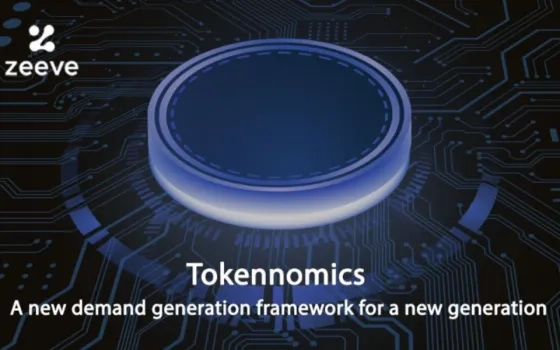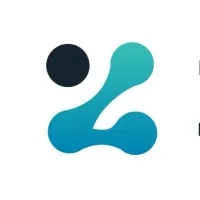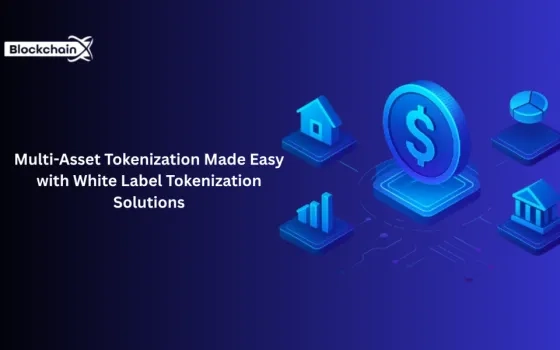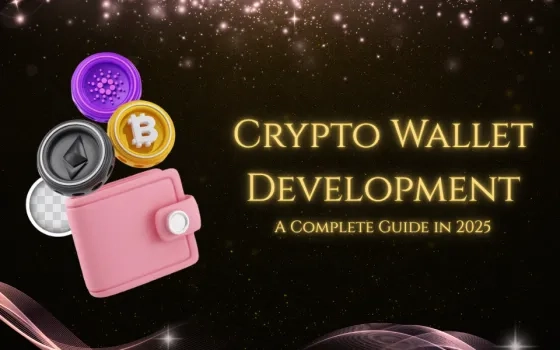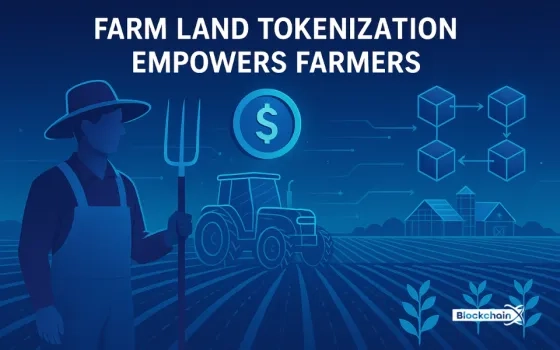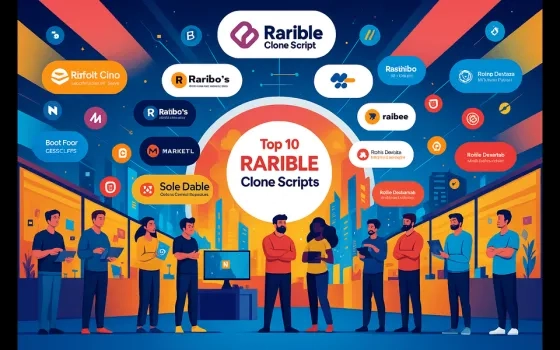What a difference 17 years make! Back in 2000, when a small startup proposed the economic design of allowing people to lend their storage space for money, this would have been met with absolute skepticism – Thumbs Down all around.
Fast forward to 2017. The use of blockchain tokenomics, has created a whole new way of doing business – and funding it. One can go from concept to successful launch with nothing more than a website, a whitepaper demonstrating some real-world use cases, convincing tokenomics, and trust safeguarded by blockchain. No wonder we see so many Thumbs Up!
Token economy has ushered in a revolution of sorts, with digitized value creation available on a global scale. Tokenomics is an incredibly dynamic framework that empowers businesses and users to explore digitally-driven scarcity and governance opportunities. Hence, it is not an understatement to say that tokenomics is a new demand generation framework for a new generation. As one embarks upon tokenomics, there are numerous important considerations that need to be addressed in order to create a sustainable token ecosystem. Being adventurous and exploring tokenomics possibilities can have incredible benefits but only when planned accordingly. Get ready for the tokenomy journey!
Key Factors For Building a Good Token Economics
The Utility Is Simplified
Building tokenomics into the framework of a project is no easy task, especially when factoring in the importance of utility. After all, token economies must be designed to achieve something tangible. Token holders need to understand if their token will grant them access to products and services or give them governance rights over the project – token holders need clarity!
A token with utility is closely linked with the success of the project, so it’s important to make sure you have the right token for your business. If it’s goods and services you’re offering, a Utility token could be just the ticket. Alternatively, If shares of your company are on the table, Security tokens can be the better choice since ownership rights will automatically become the token holder’s claim to fame. Decentralized organizations should consider Governance tokens that allow token holders voting rights – perfect for making sure everyone’s voice is heard. And if tokenizing a real-world asset is more up your alley, Fungible and Non-fungible tokens could be just the thing! It pays to think things through; after all, your token type is critical to success.
Figure out what token you need and make sure your project stands the test of utility!
Value Creation Over Time
If tokenomics had a slogan, it’d be ‘If you build it, they will come.’ Creating the right token model from the beginning is vital for long-term tokenomics success. If token inflation — an increase in token supply over a certain period of time— can be balanced with creative rewards and incentives to token holders, then you’ve got yourself a rewarding model. Think loyalty points, credits, commission splits – if your token economy reward system aligns with platform behaviors and trends, then sit back and watch value creation unfold as more people get involved. It’s like throwing coins into a wishing well – don’t worry about losing them because you get plenty of tokens in return! Aptos is an L1 blockchain, and it is traded under the domain extension “APT.” It was created with the principle of mass adoption, scalability, trust, reliability, cost-efficient, security, and continual upgradability.
Sometimes it just makes more sense to roll out a deflationary token model designed to accommodate and adjust user behavior perceptions over time. It’s all about encouraging users to remain active in the platform for a better, more engaging experience – and the added bonus of token value growth is just icing on the cake! After all, who doesn’t want rewards for staying loyal?
Issuance Schedule
Tokenomics can seem like token magic at times, with projects often unsure of whether to set up a fixed or flexible token emission schedule. On the one hand, it can be more straightforward for the user if token release is fixed – but this route carries a risk linked to token demand. An effective incentivisation model is needed to balance the scales; a flexible token emission schedule can seem like a logical solution, however tokenomics should not rely solely on supply and demand principles.
For example, algorithmic decisions around token unlocking have the potential to lead to another TERRA-LUNA event – something we definitely want to avoid these days! From what it looks like, a more logical approach would be to go down the path of a flexible token emission schedule with well thought out algorithmic decision making specifically designed for each aspect of token unlocking.
Use of Token Economy To Stimulate Demand For Various Problems
Loan Borrowing Challenges: AAVEs arbitrage Way To Fix That For Creating Demand
In the present lending and borrowing model that banks follow, users have to show something concrete like property or assets as collaterals to show that they can pay back the loan amount. Despite that, there’s no guarantee that the loan will be processed quickly. Banks have many reasons to believe like your inability to pay back the loan. Due to the use of such a model, it has created entry barriers for businesses that are wishful of expanding their prospects.
Platforms like Aave or Compound are the new generation’s financial institutions. The AAVE ecosystem, by partnering with Centrifuge introduced a system where cargo-freight invoices, payment advances and even real-estate can be introduced as an effective guarantee of the loan repayment. They are even provisioning a loan disbursal through the system to drive the demand for their tokens.
Another noble use-cases that AAVE introduced to drive the demand for its AAVE token is flash-loans. Through flash loans, you can take loans in crypto and pay-back the same within the same transaction to walk away with profits.
But the question is why would one do that? Arbitrage, is the answer! You can take DAI from one of the platforms, SWAP it for USDT that’s trading at a premium price on another lending/borrowing platform. Return back to pay DAI with a little interest on top of it and make a small profit out of the same. This activity drove AAVE to the rooftop when it scaled the ATH of $628 in the previous bull market. Ecosystem participants flocked to enjoy such an upside since they literally experienced such a trade-off for the very first time where they can borrow in millions and pay back at the same time but the end-game was the profit that they could easily make in the process.
Real-estate Access Bottlenecks: Use of Tokenomy To Stimulate Real-Estate Demand
The global real-estate market has a market capitalization of US$ 6,883 billion. However it has been struggling due to its reliance on archaic structural practices. . Max Zheng, the Founder of BFG Blockchain and Phillip Sander, the Founder of Blockchain Frankfurt School have said that the real-estate sector has been plagued by high-entry ticket costs, complexity of ownership and legacy systems. Complexity and transaction costs have further made the sector non-attractive for a median household. Introduction of tokenomy to the real-estate sector would mean the core problems like ownership, fractionization, data digitization can be stimulated through the use of blockchain
Projects like LABS.IO, Propy, Ubitquity, REX, BitReal and Decentraland have introduced practical concepts to the real-estate sector which has completely revolutionized the segment and created their demand. From buying real-estate property using crypto, cross border acquisition to fractionization of real-estate, everything has been built on top of a battle-tested tokenomics built on top of blockchain to create demand. Hence we have seen a massive overhaul in the real-estate sector.
Rethinking Creator Economy:
The grim truth of the online world is that an average user gives away more than half their lunch break in advertising they are exposed to while enjoying their daily fix of social media. This means a staggering 6.58% of their precious time is spent glued to ads that earn nothing for the viewer – not a penny.
But here’s the real kicker: not only does the content creator get nothing from this, but the platform itself rakes in obscene amounts of profits year after year. That’s where tokenomics come into play, though – the idea of shared economy will provide a path forward towards rewarding viewers who are currently exploited as part of an uneven power structure and ease it up on content creators who now get only a meager portion of what the platform makes.
Tokenomics holds the potential to become the new lifeblood of the creator economy. Through tokenomics, creators can open up entirely new revenue streams for their work and create opportunities that were never before possible. Not only does tokenomics allow for increased financial rewards for creators, it also benefits the platform users as tokenomics allows them to directly engage in activities that support them, creating a sense of satisfaction because they are driving measurable value back into the creators’ pocketbooks. This kind of eco-socially responsible tokenomics drives an overall increase in demand across multiple channels, making it a win-win situation for everybody involved!
To sum it up, tokenomics keeps the creator economy in motion by creating a balanced ecosystem of demand and reward, which only grows over time!
Wrapping Up:
When you look at the application of tokenomics in building a new demand generation in the economy, sky’s the limit. At present, the blockchain space is in its nascent stage of development. We have just explored 14 years of technology adoption. As we move forward and go deep in terms of adoption, it would unravel new challenges that must be answered. This is just the tip of the iceberg when you consider token economies as a new demand-generation tool.
About The Author

Dr. Ravi Chamria is co-founder CEO of Zeeve Inc, an Enterprise Blockchain company. He has an experience of 18+ years in IT consulting spanning across Fintech, InsureTech, Supply Chain and eCommerce. He is an executive MBA from IIM, Lucknow and a prolific speaker on emerging technologies like Blockchain, IoT and AI/ML.
Passionate About: Blockchain, Supply Chain Management, Digital Lending, Digital Payments, AI/ML, IoT
Specialities: Strategic Management, Technology Innovation, Product Management.



